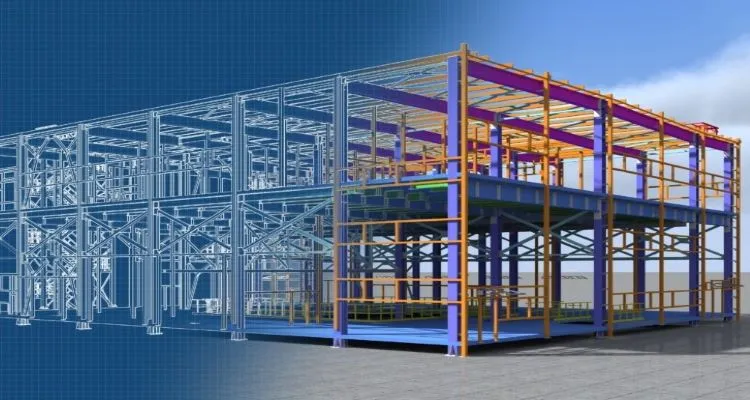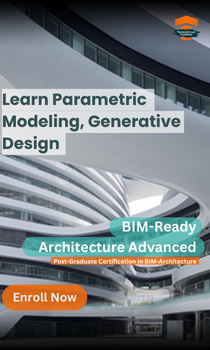Brief Understanding Of 3D BIM Modeling
Mar 04, 2024
Category: BIM / Digitization / Automation
SEO TSA

The AEC sector has gone a long way from drawing with a pen on big pages to offering CAD drafting services. 3D BIM modeling services have brought about the next step in design and construction progression.
In this tech-driven era searching for new-age design sensibilities, this cutting-edge technology has been extensively accepted. This in-depth guide is intended for those who are new to or would like to learn more about 3D BIM modeling. We’ll go over the fundamentals of 3D BIM modeling in it.
What is 3D BIM Modeling?
BIM modeling is a technique for creating a three-dimensional representation of a thing using information. Instead of only having 2D lines, the virtual model has intelligent 3D objects, which may aid in the simulation, quantification, and visualization of activities about design, construction, and other aspects of the building process.
Additionally, the visual model can replicate many construction-related processes, including lighting, material transportation, and traffic flow. To generate a three-dimensional depiction of walls, windows, pumps, pipelines, and everything in between, 2D drawings are combined with elevation data to create 3D BIM models.
Once the data is entered into the BIM tools/software, it may generate a variety of views of the building or structure, including plans, parts, elevations, perspectives, views, and more.
| Also Read: The Importance Of Generative Design In Architecture
Advantages Of 3D BIM Modeling
3D BIM Modeling offers a wide range of advantages. Some of the main advantages are listed below:
Better Estimation Of Costs
When estimators work with a thorough model, they may produce far more accurate findings. You may work off a far more understanding strategy when you look at a 3D model as opposed to a 2D blueprint. Consequently, cost predictions based on models are more precise and realistic.
Additionally, with greater access to tools and information, it speeds up the estimate process significantly. BIM can optimize more than just cost estimations. Quantity takeoffs are further simplified by BIM models, which provide a more thorough model to work from.
Recognizing Problems
Because 3D modeling can be so simple, architects may not only spend more time experimenting and playing with their ideas, but they can also see any issues with their work before they become actual and end up costing the firm a lot of money to correct.
The model can be turned to see it from every angle, and designers may invite anybody to examine it, even those without an engineering background so that more people can see potential fixes for issues.
Identification and Resolving Clashes
Clash detection is one of the main advantages of this virtual modeling. By digitally portraying every project component, 3D models enable specialists to identify and resolve problems across the mechanical, electrical, plumbing, and structural systems.
This early detection of problems allows for a quick fix before the building starts. This reduces the need for expensive on-site modifications, delays, and rework and results in considerable cost savings.
Effective Facility Administration
Beyond just the building phase, 3D modeling in construction offers several advantages. The basis for effective facility management may be laid by using these virtual models. Building Information Modelling (BIM) is an approach for storing information on a building’s components, systems, and maintenance schedules.
To maximize building performance and save operating expenses, facility managers and project owners will find this information to be very helpful.
What Is The Future Of 3D BIM Modeling?
It could be argued that 3D BIM is already in the future. Through cloud processing, it is now feasible to link collaborative models with physical on-site structures by combining intelligent digital 3D models with reality capture technology.
In the business, combining 3D BIM with intelligent technologies like AI is becoming more and more popular. Using AI and large data sets, sophisticated algorithms may quickly provide standardized design models.
The final digital models may then be evaluated to ascertain cost and practicality, the local environment, and the developer’s particular needs using virtual platforms like BIM 360 OPs. This expedites the process by allowing decisions and commitments to be made early on.
In addition, to provide a uniform workspace and perspective of buildings, 3D BIM can also be combined with augmented reality (AR) and virtual reality (VR). Using a virtual reality headset, individuals from all over the world might visit and experience entire projects or houses hosted on the cloud from the comfort of their own living rooms.
Conclusion
To sum up, 3D BIM modeling is a valuable tool in the design and construction sectors. Professionals can visualize, plan, and manage projects using this kind of virtual modeling before they are constructed, which lowers costs, boosts efficiency and safety, and gets rid of any issues.
Higher levels of stakeholder participation are also made possible by it, and more precise data is made available for decision-making during the course of the project. New technology will lead to tremendous value and return on investment as well as new prospects. At first, 3D BIM takes time to learn and integrate.
As previously stated all parties involved in the process including architects, engineers, surveyors, and owners will need to be able to use the capacity to develop an intelligent digital 3D model that preserves information for years to come to make well-informed judgements.









